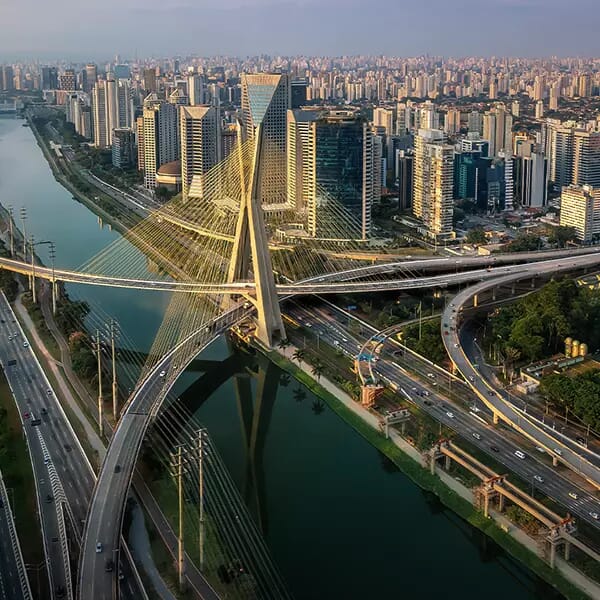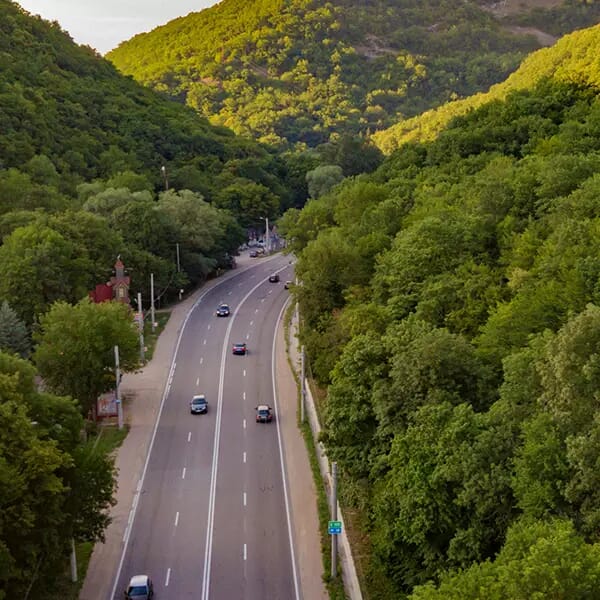Mira: There are many reasons to invest in Brazilian market
Graeme Conway, head of Macquarie Infrastructure and Real Assets for the Americas, monitors the Country closely.
January 15, 2016Infrastructure
How are foreign investors looking at the infrastructure opportunities in Brazil at this moment of political transition for the Country? Have the Lava Jato investigations, which compromised the operation of several major Brazilian companies, opened up opportunities? Are innovations, such as the Programa de Parcerias de Investimentos (PPI), being welcomed? Is there an interest in participating in future concessions and PPPs here?
Graeme Conway, senior managing director and head of the Americas at Macquarie Infrastructure and Real Assets (Mira), supplies answers. Conway, who was the keynote speaker of GRI Infra South America, makes it clear that investors are keeping an attentive eye on all new ventures here and seeking to finely gauge return expectations and risks volatility. But he is adamant: “There are many reasons to invest in the Brazilian market.” Check out the interview to GRI Magazine:
What is Mira’s presence in LatAm?
Mira has been active in Latin America since 2009 when it established the first peso-denominated fund focused solely on investment opportunities in Mexican infrastructure, the Macquarie Mexican Infrastructure Fund. In the real estate sector, Mira completed the global offering of Macquarie Mexican REIT in December 2012 and now manages nearly 300 real estate properties across Mexico. Finally, Mira has also been invested in the agriculture sector in Brazil since 2010, with a focus on cropping land through its unlisted fund, Macquarie Crop Partners, and has over 50,000 hectares of farmland across Brazil.
Is this a good moment to invest in the Brazilian market?
Brazil has the seventh largest economy in world, yet ranks 120th out of 144 countries for the quality of its infrastructure, according to the World Economic Forum. Given the number and scale of investments available, pricing levels, and the fact that foreign exchange rates are at historical lows, there are many good reasons to invest in the Brazilian market. In particular, the concession model and investment opportunity around energy generation and transmission assets is relatively attractive. On the transport side, certain strategically located assets, especially in the ports and roads sectors, should be beneficiaries of the longer term fundamentals of the country. However, the short-term political situation is undoubtedly volatile and warrants caution. Investors need to understand the risks of this environment and proceed accordingly.
Have the current anti-corruption investigations in Brazil (and their impact on the biggest Brazilian infrastructure companies) created any kind of opportunity for investors in the country?
The current anti-corruption investigations in Brazil demonstrate that the country is committed to improving business practices and, perhaps more importantly, have positively tested the independence of its institutions in challenging corruption at the highest levels of business and politics. These investigations, in combination with much-needed efforts on the fiscal front, are also expected to accelerate a market shift to long-term private capital participation, which should improve the country’s infrastructure model. Nevertheless, investors remain cautious about engaging with firms or assets tainted by the scandal. Investors need to balance the opportunity around such assets with counterparty exposure and the complexities of Brazil’s ongoing – and evolving – business and political environment.
Will the government change in Brazil have any impact on investors’ strategies for the country?
The impact will depend on the new government’s ability to build the support critical to implement the necessary policy changes, however painful they may be in the short term. Political uncertainty is one of the biggest issues currently facing Brazil and providing clarity on this will be critical to unlocking Brazil’s current situation. Whilst the country’s fundamentals remain strong in the long term, investors will benefit from stability and a clear indication of the government’s path.
What are investors looking for when considering Brazil?
Investors will weigh the short-term risks mentioned already with the potential for long-term gain in the years ahead. While investors certainly need to balance the political turmoil with the upside potential, investment opportunities do exist. Brazil is one of the largest countries in the world, both in terms of economy and geography, and rich in resources with attractive demographics. Investors remain interested in the country, but will seek a premium to compensate them for the risk associated with recent volatility. They are also likely to be more selective in the asset classes they pursue as they seek to manage these risks.
What kind of investment opportunities is the group looking for in Latin America and in Brazil? (Partnerships? Acquiring stakes in businesses or local companies as a whole? Greenfield or brownfield projects? In which infrastructure sectors? Any preferred geographical areas?
We tailor our investment strategies to the specific country in which we are interested in investing. This includes analyzing sectors to determine the best areas of focus, looking at both greenfield and brownfield opportunities and also assessing the best partnering strategies. Latin America is likely to continue to present, on balance, a broader set of greenfield opportunities than many developed markets given the stage of infrastructure development across the region. However, this does not mean there are limited brownfield opportunities and there is significant opportunity to participate in operating assets across the region. This is especially the case in Mexico, where regulation changes are driving opportunities in the energy sector, particularly in the midstream sectors. In terms of geographic focus, as Brazil and Mexico represent about two-thirds of Latin America’s GDP, these markets will provide a significant amount of the deal flow over the longer term. However, other markets like Chile, Columbia and Peru should remain active and continue to prove attractive investment destinations.
Are investors interested in participating in government concessions / PPPs in Brazil?
Brazil has successfully welcomed private capital participation in a number of infrastructure segments for over 20 years. While the models for concessions and PPPs have differed over the years, there have recently seen signs – last month’s transmission line auctions, for example – that the government is continuing to improve the clarity of processes and proper risk allocation, while allowing a competitive bidding structure to define the return levels. Investors will closely watch the current government changes and its impact on the opportunity for improved private capital participation in Brazil’s infrastructure projects. In particular, investors will focus on the details of the new Programa de Parcerias de Investimentos (PPI) that President Temer recently announced. Finally, the shift from construction companies leading infrastructure projects, to long-term private infrastructure capital investors leading them, is expected to provide better clarity on the long-term viability of projects for investors.
What would be an adequate IRR when it comes to investing in Brazil today?
While specific return expectations vary, investors consistently expect to be rewarded for taking risks associated with emerging market countries. Investors may approach this in different ways, although in order to achieve a risk-adjusted return, premiums for country risk and foreign exchange are typically required. It should be noted that an asset may, or may not, have a different asset level return compared to an equivalent asset in a developed market because investors will seek an additional premium for other qualitative factors. Appropriate, risk-adjusted returns can be achieved in Brazil today, but in general it seems the market has been slow in adjusting risk premiums from previous expectations. We think the government recognizes this and is attempting to address it to ensure projects can continue to move forward. This is reflected in the adjusted returns and allocation of risk for the latest transmission auctions, although further adjustments are likely needed to ensure higher clearance rates.
Did the Real depreciation enhance the attractiveness of investments in Brazil? To what extent?
The Real depreciation presents a potentially attractive entry point for investors eyeing the Brazil market over the long term. However, as already mentioned, investors will be balancing this benefit with the current risks inherent in the current political environment.
What key topics will you talk about in the GRI Infra South America as the keynote speaker?
I look forward to addressing the GRI Infra South America audience. I will discuss my view of the opportunity for international investors in South America, touching on why international investors want a LatAm exposure and seeking to compare and contrast this with other opportunities that exist around the world.
By Giovanna Carnio, editor-in-chief
Graeme Conway, senior managing director and head of the Americas at Macquarie Infrastructure and Real Assets (Mira), supplies answers. Conway, who was the keynote speaker of GRI Infra South America, makes it clear that investors are keeping an attentive eye on all new ventures here and seeking to finely gauge return expectations and risks volatility. But he is adamant: “There are many reasons to invest in the Brazilian market.” Check out the interview to GRI Magazine:
What is Mira’s presence in LatAm?
Mira has been active in Latin America since 2009 when it established the first peso-denominated fund focused solely on investment opportunities in Mexican infrastructure, the Macquarie Mexican Infrastructure Fund. In the real estate sector, Mira completed the global offering of Macquarie Mexican REIT in December 2012 and now manages nearly 300 real estate properties across Mexico. Finally, Mira has also been invested in the agriculture sector in Brazil since 2010, with a focus on cropping land through its unlisted fund, Macquarie Crop Partners, and has over 50,000 hectares of farmland across Brazil.
Is this a good moment to invest in the Brazilian market?
Brazil has the seventh largest economy in world, yet ranks 120th out of 144 countries for the quality of its infrastructure, according to the World Economic Forum. Given the number and scale of investments available, pricing levels, and the fact that foreign exchange rates are at historical lows, there are many good reasons to invest in the Brazilian market. In particular, the concession model and investment opportunity around energy generation and transmission assets is relatively attractive. On the transport side, certain strategically located assets, especially in the ports and roads sectors, should be beneficiaries of the longer term fundamentals of the country. However, the short-term political situation is undoubtedly volatile and warrants caution. Investors need to understand the risks of this environment and proceed accordingly.
"There are many good reasons to invest in the Brazilian market. In particular, the concession model and investment opportunity around energy generation and transmission assets is relatively attractive"
Have the current anti-corruption investigations in Brazil (and their impact on the biggest Brazilian infrastructure companies) created any kind of opportunity for investors in the country?
The current anti-corruption investigations in Brazil demonstrate that the country is committed to improving business practices and, perhaps more importantly, have positively tested the independence of its institutions in challenging corruption at the highest levels of business and politics. These investigations, in combination with much-needed efforts on the fiscal front, are also expected to accelerate a market shift to long-term private capital participation, which should improve the country’s infrastructure model. Nevertheless, investors remain cautious about engaging with firms or assets tainted by the scandal. Investors need to balance the opportunity around such assets with counterparty exposure and the complexities of Brazil’s ongoing – and evolving – business and political environment.
Will the government change in Brazil have any impact on investors’ strategies for the country?
The impact will depend on the new government’s ability to build the support critical to implement the necessary policy changes, however painful they may be in the short term. Political uncertainty is one of the biggest issues currently facing Brazil and providing clarity on this will be critical to unlocking Brazil’s current situation. Whilst the country’s fundamentals remain strong in the long term, investors will benefit from stability and a clear indication of the government’s path.
What are investors looking for when considering Brazil?
Investors will weigh the short-term risks mentioned already with the potential for long-term gain in the years ahead. While investors certainly need to balance the political turmoil with the upside potential, investment opportunities do exist. Brazil is one of the largest countries in the world, both in terms of economy and geography, and rich in resources with attractive demographics. Investors remain interested in the country, but will seek a premium to compensate them for the risk associated with recent volatility. They are also likely to be more selective in the asset classes they pursue as they seek to manage these risks.
What kind of investment opportunities is the group looking for in Latin America and in Brazil? (Partnerships? Acquiring stakes in businesses or local companies as a whole? Greenfield or brownfield projects? In which infrastructure sectors? Any preferred geographical areas?
We tailor our investment strategies to the specific country in which we are interested in investing. This includes analyzing sectors to determine the best areas of focus, looking at both greenfield and brownfield opportunities and also assessing the best partnering strategies. Latin America is likely to continue to present, on balance, a broader set of greenfield opportunities than many developed markets given the stage of infrastructure development across the region. However, this does not mean there are limited brownfield opportunities and there is significant opportunity to participate in operating assets across the region. This is especially the case in Mexico, where regulation changes are driving opportunities in the energy sector, particularly in the midstream sectors. In terms of geographic focus, as Brazil and Mexico represent about two-thirds of Latin America’s GDP, these markets will provide a significant amount of the deal flow over the longer term. However, other markets like Chile, Columbia and Peru should remain active and continue to prove attractive investment destinations.
Are investors interested in participating in government concessions / PPPs in Brazil?
Brazil has successfully welcomed private capital participation in a number of infrastructure segments for over 20 years. While the models for concessions and PPPs have differed over the years, there have recently seen signs – last month’s transmission line auctions, for example – that the government is continuing to improve the clarity of processes and proper risk allocation, while allowing a competitive bidding structure to define the return levels. Investors will closely watch the current government changes and its impact on the opportunity for improved private capital participation in Brazil’s infrastructure projects. In particular, investors will focus on the details of the new Programa de Parcerias de Investimentos (PPI) that President Temer recently announced. Finally, the shift from construction companies leading infrastructure projects, to long-term private infrastructure capital investors leading them, is expected to provide better clarity on the long-term viability of projects for investors.
What would be an adequate IRR when it comes to investing in Brazil today?
While specific return expectations vary, investors consistently expect to be rewarded for taking risks associated with emerging market countries. Investors may approach this in different ways, although in order to achieve a risk-adjusted return, premiums for country risk and foreign exchange are typically required. It should be noted that an asset may, or may not, have a different asset level return compared to an equivalent asset in a developed market because investors will seek an additional premium for other qualitative factors. Appropriate, risk-adjusted returns can be achieved in Brazil today, but in general it seems the market has been slow in adjusting risk premiums from previous expectations. We think the government recognizes this and is attempting to address it to ensure projects can continue to move forward. This is reflected in the adjusted returns and allocation of risk for the latest transmission auctions, although further adjustments are likely needed to ensure higher clearance rates.
Did the Real depreciation enhance the attractiveness of investments in Brazil? To what extent?
The Real depreciation presents a potentially attractive entry point for investors eyeing the Brazil market over the long term. However, as already mentioned, investors will be balancing this benefit with the current risks inherent in the current political environment.
What key topics will you talk about in the GRI Infra South America as the keynote speaker?
I look forward to addressing the GRI Infra South America audience. I will discuss my view of the opportunity for international investors in South America, touching on why international investors want a LatAm exposure and seeking to compare and contrast this with other opportunities that exist around the world.
By Giovanna Carnio, editor-in-chief



